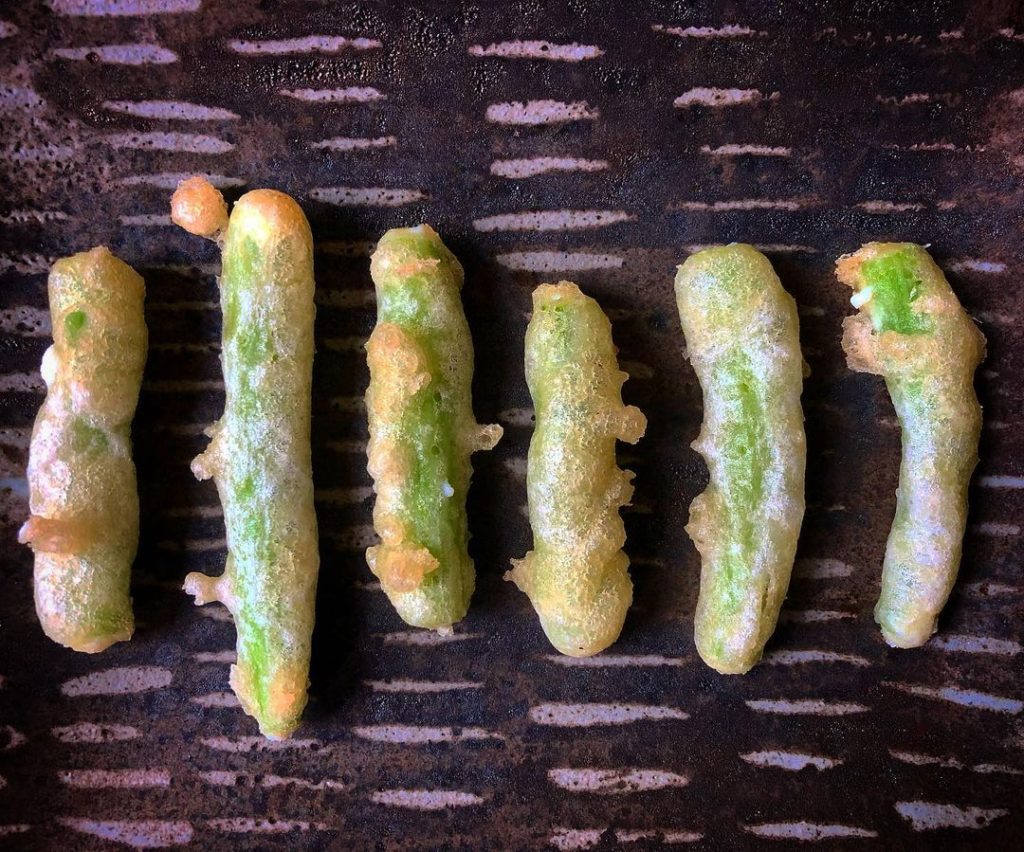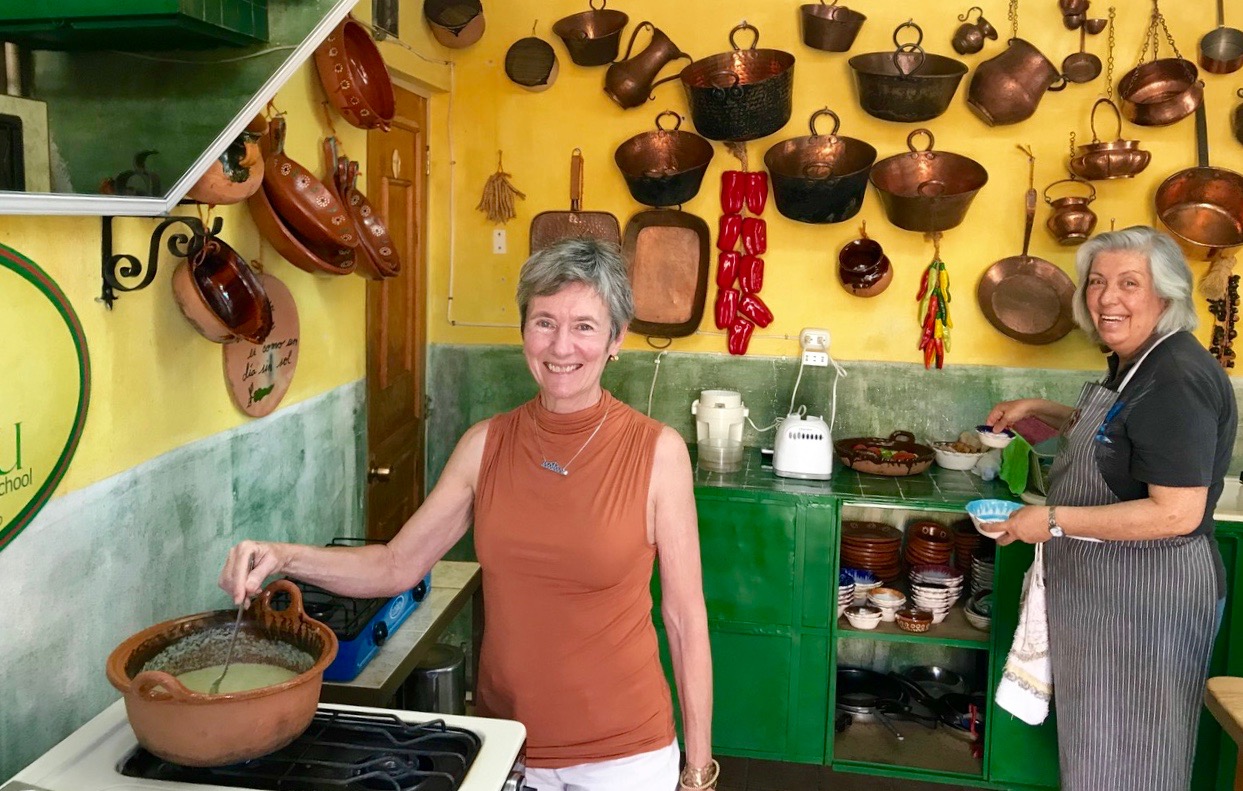Reason #1 why squash is so great: you can cook all of it! The flowers are edible. The leaves are edible. The stems are edible. The seeds are edible. The peel is edible.
Reason #2 why squash is so great: you can eat it in every meal! Even in cookies.
In honor of reason #1 and #2, today I’m sharing some links to recipes and cooking ideas that you might find surprising, and might be curious to try. Some of them you’ll only be able to try if you have your own garden, or live near an especially good international produce market. Others anyone can try with squashes readily available in the grocery store.
You Can Eat Squash Leaves and Pumpkin Leaves
There’s a beautiful, delicious, and healthy green vegetable growing in many of our gardens that we all just let go to waste: squash leaves. I was in Tanzania in 2018 and observed many family gardens growing squash plants mostly for the leaves. Squash leaves, or pumpkin leaves, are a nutritional powerhouse, containing not only typical leafy green benefits like vitamins A, B, and C, but also minerals such as zinc, iron, potassium, and magnesium.

Bermuda-based blogger Princess Tafadzwa includes a Zimbabwean pumpkin leaf dish, muboora, as part of her favorite meal along with roast chicken and sadza (maize flour porridge). She gives her muboora recipe along with detailed instructions on how to prepare the leaves.
There’s a very specific trimming method to remove the stringy parts, which Ms. Tafadzwa amply demonstrates in a super-helpful and quite meditative video.
Not every culture that eats squash leaves does this extensive trimming, so you can try it both ways and see what you prefer. In some regions of India, younger squash leaves are trimmed off of the growing plant and less preparation is needed.
You Can Eat Squash Stems
Yes, you can even eat the stems. In some truly ingenious ways. Famous chef Dan Barber cleverly imitates the pasta shape penne by cutting stems at a diagonal and giving them the cacio e pepe treatment. One such recipe is online at the Row 7 Seeds website.
Here in my home town of Asheville, North Carolina, one of my three favorite restaurants is the steadily amazing Cucina24. In August of pandemic-plagued 2020, Chef Brian Canipelli shared on his Instagram feed an image of squash stems stuffed with ricotta, lightly battered, and fried. Such dedication. With his customer base mostly shopping via takeout except for a few outdoor tables, he does not stop cranking up the creativity. He’s been grinding out the quality for so very long, a good ten years before the James Beard Foundation started to check Cucina24 out. This is a restaurant where you can drown yourself in great meats and pastas, AND/OR make a complete meal out of the most perfectly prepared vegetable dishes imaginable. Mini-review over and out. Here’s Chef Canipelli’s squash stem dish.

Squash Cookies – JA Cooks

Japanese Kabocha Squash Cookies are presented by Japan-based, bilingual blogger JA Cooks. This recipe is an example of the versatility of squash and the fact that you’ve got to choose the right squash for the right purpose. Kabocha is one of the most dense-fleshed and richly flavored squashes. So kabocha can be added to a cookie dough to give flavor and color without making the dough too watery, as could a good butternut or kuri squash. For a recipe like this, make sure your kabocha is a good, ripe, mature one. It should feel heavy when you harvest or choose it from the store. The color inside should be a nice deep orange, with firm flesh that’s a little hard to cut. Watch JA Cooks’ video on how to cut a kabocha, and you’ll note the color and texture.
Juri’s recipe is vegan, lower in sugar than most cookies, and made with half almond flour which gives a low-carb result (for a cookie). It reminds me of certain Asian cookies that contain an egg yolk, but in this case the squash adds the same rich color and depth of flavor. Pumpkin seeds on each cook add a beautiful and thematic touch. Here’s a direct link to the cookie recipe.
Pipián Verde: Pumpkin Seed Mole
Most Americans think of pumpkin seeds as a plain crunchy snack and not much more. In Mexico and some parts of Central and South America, pumpkin seeds are ground into a sort of flour. They then become one ingredient, often a base ingredient and thickener, for mole (pronounced ‘mo-lay’ as in guacamole—the one version of this word we all know). Mole is a type of sauce. Dishes based on mole are famously complex, truly one of the most sophisticated cuisines in the world.
Pipián verde is a green pumpkin seed based sauce, often served with chicken or other stewed or poached meats. Food Network chef Aarón Sánchez even serves it with salmon. The pumpkin seed is combined with anywhere from five to twenty ingredients, such as green or dried herbs, leafy greens like spinach or lettuce, tomatillos, onions and garlic, sesame seeds, peanuts, chicken stock, and even a corn tortilla. Many of the ingredients are toasted to develop rich, dark flavors and then it’s all ground into the most multi-flavored sauce imaginable.
Here’s a fabulous photo of food blogger Jan of the sur le plat blog. Among all pipián verde recipes, I chose this chicken dish to link for you because of the lovely setting and happy faces. I believe that the woman on the right is Marilau, proprieter of the Mexican Ancestry Cooking School in San Miguel de Allende.

You Can Eat Squash Peels
For a last trick in our tail-to-snout squash tour, we’re going to return to the first thing you often remove when cooking a vegetable: the peel.
Yes, the peel, or skin, of a squash is perfectly edible too. If a squash looks and feels waxy, in a thick, unnatural way, it might be coated with a food-safe wax layer; avoid that. Otherwise, it’s just a matter of how tough it will be. Butternut, acorn, and delicata squashes certainly are edible and delicious. Victoria Glass is a cookbook author who was once the Gastronomic Writer in Residence at the Roald Dahl Museum in the UK. Her 2017 book Too Good to Waste: How to Eat Everything includes a recipe for Butternut Squash Skin Crisps with Lemon and Tahini Dip. Here, her publisher shares a video account of that recipe. Happy cooking!
